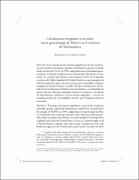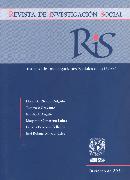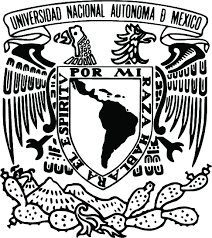Por favor, use este identificador para citar o enlazar este ítem:
https://ru.iis.sociales.unam.mx/handle/IIS/5344Registro completo de metadatos
| Campo DC | Valor | Lengua/Idioma |
|---|---|---|
| dc.contributor.author | Camarena Luhrs, Margarita | es |
| dc.date.accessioned | 2018-03-01T22:38:20Z | - |
| dc.date.available | 2018-03-01T22:38:20Z | - |
| dc.date.issued | 2011 | - |
| dc.identifier.uri | https://ru.iis.sociales.unam.mx/handle/IIS/5344 | - |
| dc.description.abstract | Este artículo presenta hechos significativos de las circulaciones de personas, mercancías, capitales e información, que han ocurrido desde la firma del TLCAN en 1994, sugiriendo nuevas facilidades geoestratégicas a la relación transfronteriza y territorial del subcontinente americano. Se concluye que México, como puente terrestre de las grandes corrientes del tráfico mundial de Estados Unidos, es un contrapeso de toda Norteamérica, junto con otros sectores poco articulados y regiones rezagadas de Estados Unidos y Canadá. Para que estas funciones territoriales de las circulaciones de México sean sistemáticas —no irregulares ni sujetas solo por redes que responden a intereses extranjeros, con efectos de sometimiento, abandono y vacíos urbano regionales—, han de ser complementarias de racionalidades internas que fortalezcan intereses nacionales. | es |
| dc.description.abstract | Abstract: This paper documents significant events in the circulation of people, goods, capital and information, which have occurred since the passage of NAFTA in 1994, suggesting new geostrategic facilities in transborder and territorial relations in the American subcontinent. The author concludes that Mexico, as a land bridge for the large flows of global trade from the United States, serves as a counterweight to all of North America, together with other poorly coordinated sectors and backward regions in the United States and Canada. In order for these territorial functions of circulations in Mexico to be systematic rather than irregular or only subject to networks that respond to foreign interests, which create submission, abandonment and regional-urban gaps, they must be complement the internal rationalities that strengthen national interests. | es |
| dc.language.iso | es | es |
| dc.publisher | Universidad Nacional Autónoma de México, Instituto de Investigaciones Sociales | es |
| dc.relation.ispartofseries | Revista de Investigación Social;Año VIII, Número 13 | - |
| dc.subject | circulaciones | es |
| dc.subject | geoestrategia | es |
| dc.subject | corredores | es |
| dc.subject | Mexico | es |
| dc.subject | Norteamerica | es |
| dc.subject | circulations | es |
| dc.subject | geostrategy | es |
| dc.subject | corridors | es |
| dc.subject | North America | es |
| dc.title | Circulaciones irregulares o en redes, nueva geoestrategia de México en el contexto de Norteamérica | es |
| dc.type | PeerReviewed | es |
| dc.type | Artículo | es |
| dc.rights.license | El uso de este contenido digital se rige por una Licencia Creative Commons Atribución-NoComercial-CompartirIgual 4.0 Internacional, https://creativecommons.org/licenses/by-nc-sa/4.0/legalcode.es, fecha de asignación de la licencia 2022-12-01, para un uso diferente consultar al responsable jurídico del repositorio por medio del correo electrónico repositorio.iis@sociales.unam.mx | - |
| dcterms.bibliographicCitation | Camarena Luhrs, Margarita (2011). "Circulaciones irregulares o en redes, nueva geoestrategia de México en el contexto de Norteamérica". Revista de Investigación Social 13 (invierno): 77-103. | - |
| dc.rights.url | https://creativecommons.org/licenses/by-nc-sa/4.0 | - |
| Aparece en las colecciones: | Margarita Camarena Luhrs Revista de Investigación Social | |
Ficheros en este ítem:
| Fichero | Descripción | Tamaño | Formato | |
|---|---|---|---|---|
| 04_camarena.pdf | Artículo | 695.62 kB | Adobe PDF |  Visualizar/Abrir |
| ris13.jpg | Portada | 1.47 MB | JPEG |  Visualizar/Abrir |
Los ítems de DSpace están protegidos por copyright, con todos los derechos reservados, a menos que se indique lo contrario.
